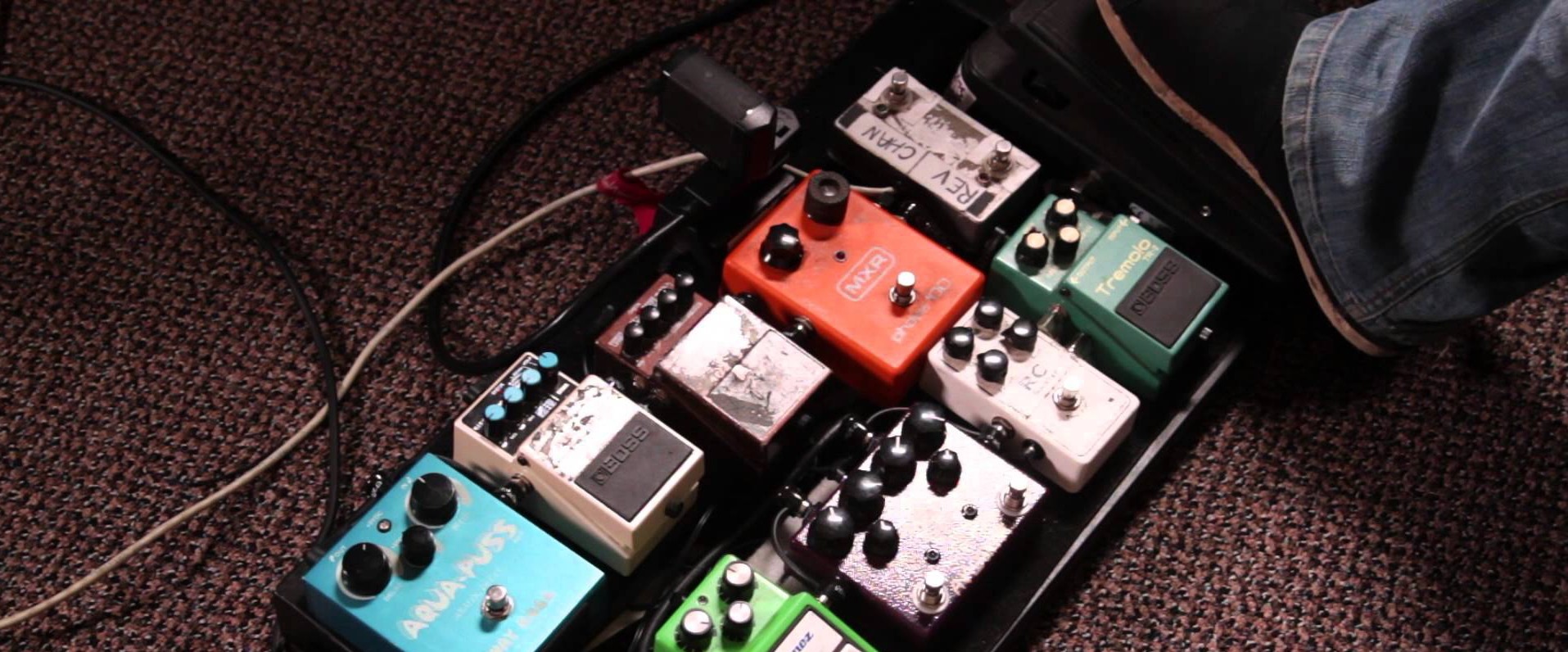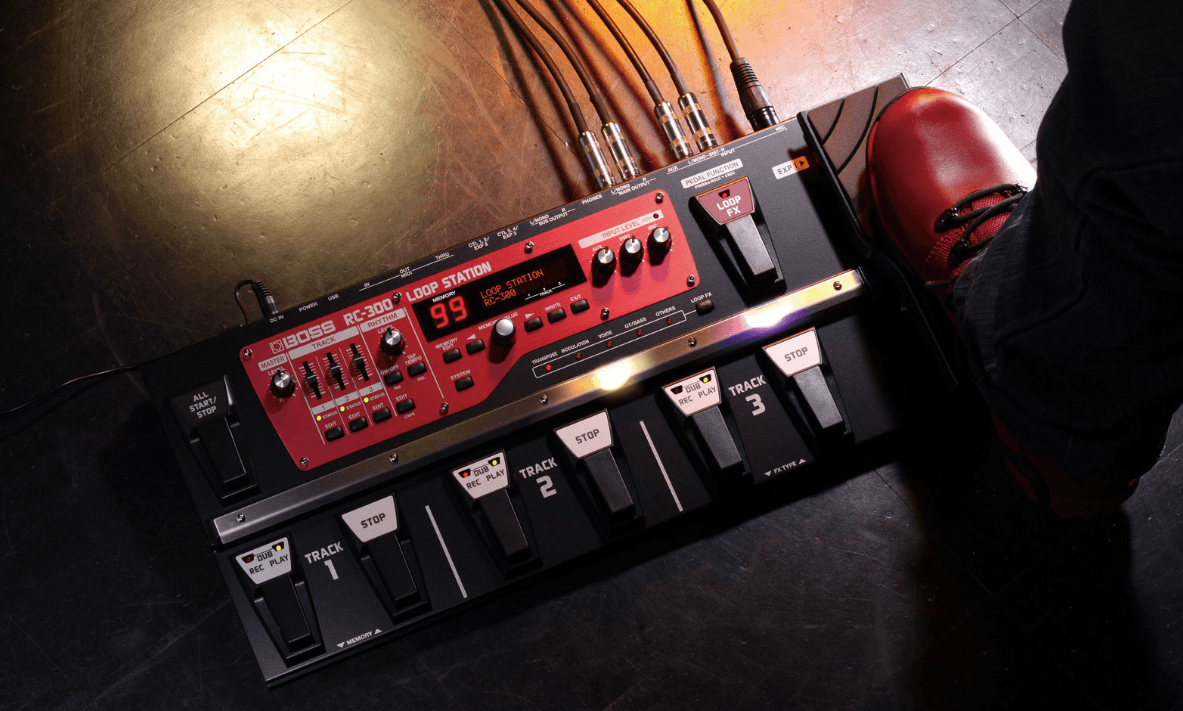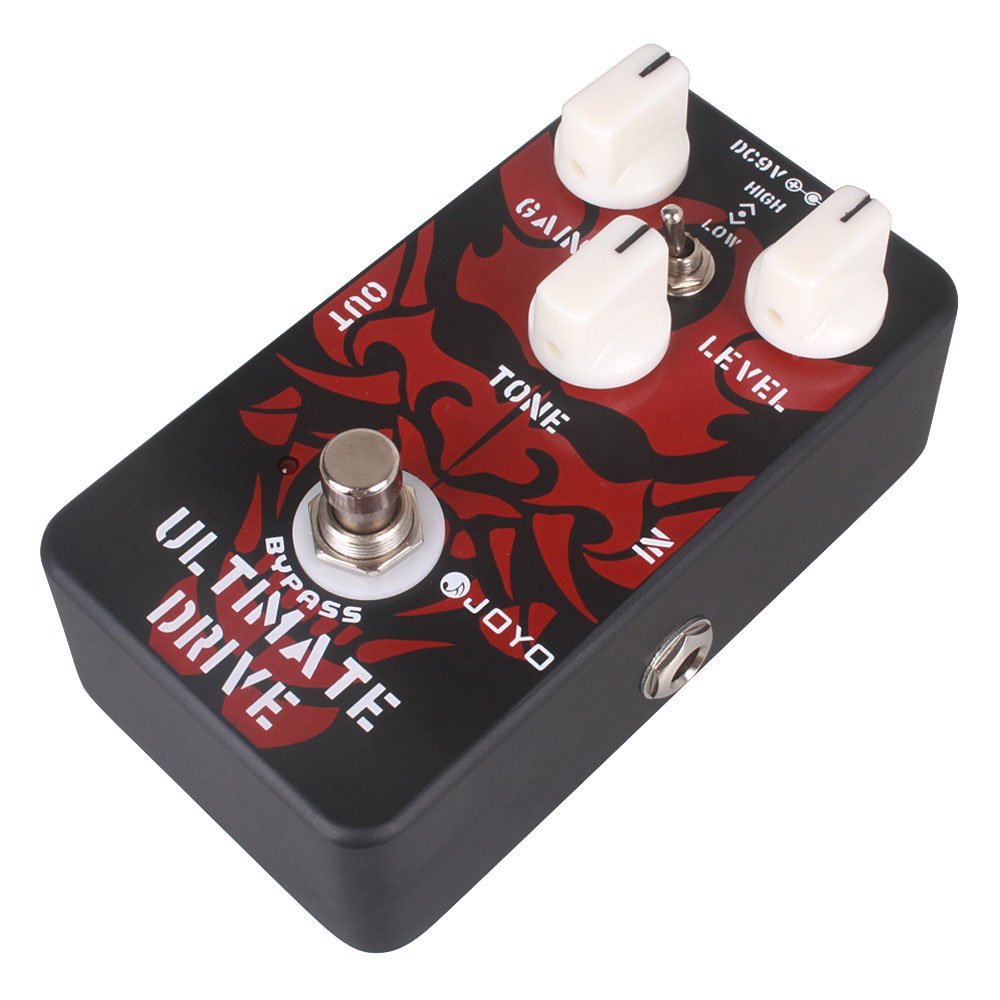Being one of the more popular delay guitar pedals on the market, Behringer DD400 pedal found its way to musicians around the globe with a distinctive mix of sound quality and price.
It’s not exactly a secret that the company had established somewhat of a bad reputation with certain products for using cheaper electronics and casing material, but this pedal is by all means an exception and a proof that economy devices can deliver top-notch audio quality.
The DD400 can be yours for about $40, delivering the same sound quality as devices with a least a twice-bigger price tag. Cuts were made in various departments of course, but they were made in a proper way, resulting in minimum quality decreases within the critical areas.
In general, this is a definite choice for your first delay pedal, but also one of the favorites for pro players. There’s plenty of points that need to be covered before you can get the big picture and determine whether this is the right choice and the pedal you really want, so join us for a full review in the section below.
Sound
The sound department is where the DD400 surprises the most, and we mean that in the most positive way. The audio quality this pedal delivers matches some of the more expensive delay pedals on the market, easily priced two or three times higher than the DD400.
The device features multiple modes and can be adjusted in a vast array of styles, giving the player ability to manipulate the sound in any given way. The quality of the loop always remains top-notch and sounds exactly like the original. What you played before the loop is what you’ll get afterward; it’s really that simple.
However, the variety of choices also requires a solid level of knowledge from the player, so be prepared to invest some time into this device. The tweaking can only result in improvements, so it’s an investment worth taking. But as far as the sound quality goes, the DD400 gets nothing but high grades and positive remarks from most users.
Features
As far as features go, the pedal is a bit more on the complex side, offering a vast array of tweaks and adjustments through a total of four control knobs. The device features seven different working modes that can be adjusted via the mode knob, delivering 24-bit high-resolution stereo audio with up to 1.3 seconds of delay time.
Apart from an input, two outputs and the on/off switch and the mentioned mode knob, DD400 features three control knobs for sound adjustments, specifically level, feedback and time. Depending on the amount of effects used, the delayed sound can vary from short and fast to longer and slower. As always, it all comes to players’ personal preferences and desired groove and vibe.
The pedal runs on a single 9V battery or through a power adapter that is not included in the package. Getting the adapter is not only highly recommended but basically a must, since the device can suck the battery dry within a matter of mere hours. Many musicians have criticized the DD40 for not being able to last through a single show on battery power. So if you’re buying one, buy an adapter as well, not only will it save you money on future battery purchases, but it will basically allow you to use the pedal in an appropriate manner.
The pedal features a 6.8 x 3.9 x 2.3 inches (17.3 x 9.9 x 5.84 cm) size and a 14.1 ounces (400 g) weight, ranking it among the light devices, primarily due to the plastic casing mentioned beforehand. When it comes to appearance, the device comes with a basic grey color and will likely fit in just fine with the rest of your pedals.
Durability and Reliability
In the durability department, DD40 scores mediocre grades with its plastic casing and knobs. It’s a device best to be treated with care, as the plastic can easily break from both rough transport and hard use. So don’t drop it, don’t stomp it hard and it will work just fine.
Once again, we’ll note that it’s a $40 device we’re talking about here. It’s also a pedal that delivers sound quality that matches much more expensive products, so a few cuts in the exterior department were well expected.
So in general, DD40 definitely isn’t the most reliable device out there, but if treated right, it will work fine. You’ll definitely need to protect it from damage and you’ll have to buy a power adapter from the very start.
Overall: Pros and Cons
So is Behringer DD40 a delay guitar pedal worth buying? By all means, yes. Unless going fully pro and investing serious money in delay pedals is what you’re after, buying a DD40 is a perfectly logical choice. For the given $40 price, you’ll get way more than you paid fore as far as sound quality goes. The vast array of included features also makes this pedal a piece of equipment you’ll constantly return to and enrich your sound with as you advance as a player.
We’ll sum it all up with a brief rundown of the device’s pros and cons; full details below.
Behringer DD40 Pros
- Sound – As noted several times, the sound quality you’ll get with this pedal surpasses most expectations with ease, especially considering the price tag. Speaking of which, let’s proceed to the next point.
- Price – The $40 price makes this pedal a true bargain and an investment you’ll hardly regret making. When you think about it, that’s the price of video games these days.
Behringer DD40 Cons
- Casing quality – With a $40 price tag, it’s clear that the cuts simply had to be made, and the company opted to make them in the exterior department, resulting in a cheaper plastic casing prone to damage.
- Battery – The device doesn’t come with a power adapter, but sucks the 9V battery dry within a matter of hours, if not minutes. So if you’re buying one of these, make sure to include a power adapter as well.











Add comment